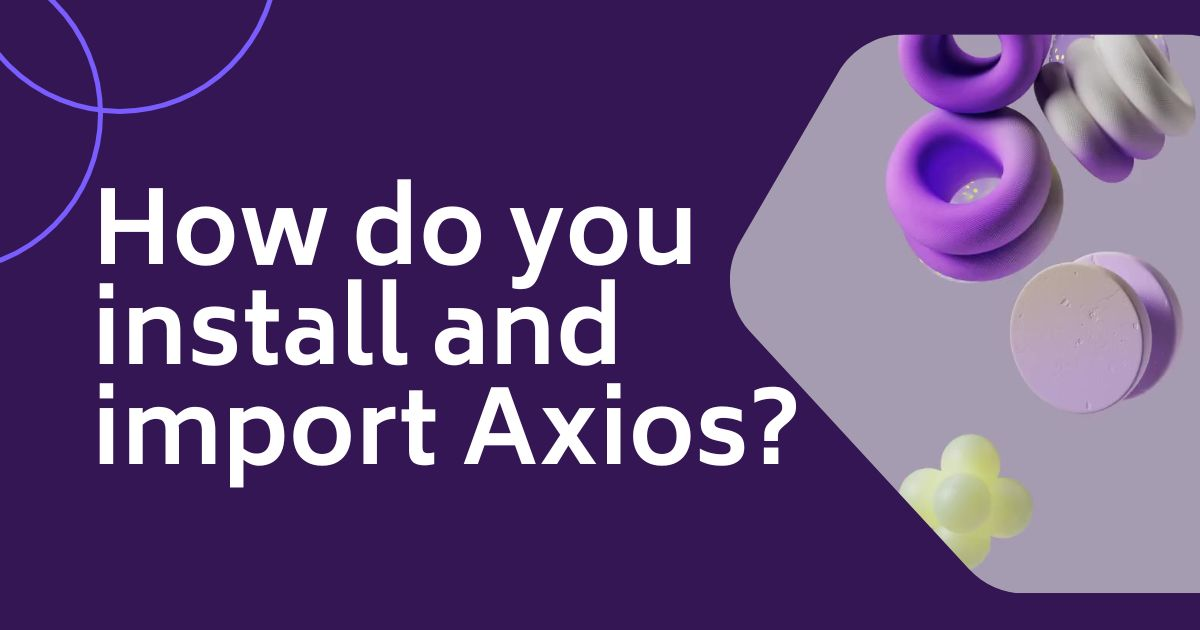How do you install and import Axios?

Axios is a simple tool to help you make HTTP requests in JavaScript. It's widely used for connecting your web applications to APIs. In this article, we will break down the steps to install Axios and how to import it into your project.
What is Axios?
Axios is a promise-based HTTP client for JavaScript. It allows you to send requests to a server and handle responses in a straightforward way. Whether you want to fetch data or send information, Axios makes it easy to work with web APIs. Let's dive into how to get started with it.
Installing Axios
To use Axios in your project, you first need to install it. Here’s how you can do that:
npm install axiosYou run this command in your terminal. Make sure you’re in your project directory. This command tells npm (Node Package Manager) to download Axios and add it to your project.
Importing Axios into Your Project
After installing Axios, the next step is to import it into your JavaScript file. Here’s the code you need:
import axios from 'axios';By using this line, you bring Axios into your file. This allows you to use all the features that Axios offers for making HTTP requests.
Using Axios to Make HTTP Requests
Now that you’ve got Axios set up and imported, let’s see how to use it to send a request. Here’s a simple example that gets data from a public API:
axios.get('https://api.example.com/data')
.then(response => {
console.log(response.data);
})
.catch(error => {
console.error('There was an error!', error);
});In this snippet, we use axios.get to fetch data from an API. The then method is for handling the response if the request is successful. The catch method will handle any errors that might happen during the request.
Sending Data with Axios
Sometimes, you will need to send data to a server. Here is how you can do that using Axios:
axios.post('https://api.example.com/data', {
name: 'John Doe',
age: 30
})
.then(response => {
console.log('Data sent successfully:', response.data);
})
.catch(error => {
console.error('Error sending data:', error);
});In this example, we use axios.post to send a new user’s information to the server. Again, we have then and catch to manage the response and any errors.
Conclusion
Installing and importing Axios is straightforward. With just a few commands, you can make powerful HTTP requests in your JavaScript projects. Whether you’re fetching data or sending it, Axios simplifies the process and allows you to focus on building your application.
By using the command npm install axios and importing it with import axios from 'axios'; , you're all set to start making requests. Happy coding!